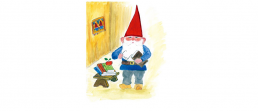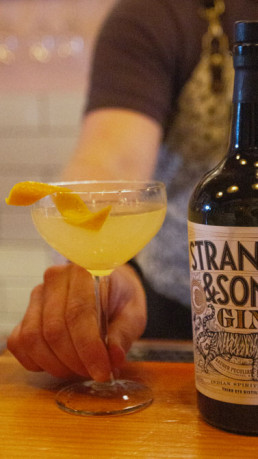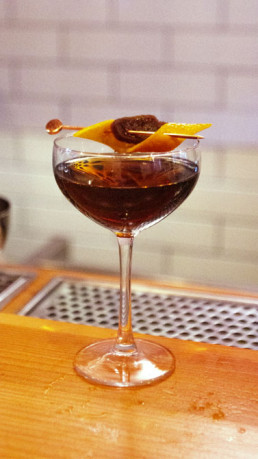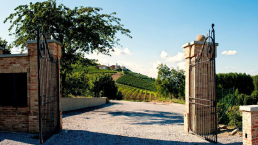Portfolio Sensorium 2023 (Christchurch)
The Dhall & Nash Portfolio Sensorium where every sensory receptor is engaged, illuminated, and enhanced!
Join Dhall & Nash this September 6th in Christchurch to taste, savour, and experience outstanding Fine Wines from 50 highly prestigious Dhall & Nash producers during an atmospheric walk-around tasting – this will be a super "Sensorium" extravaganza!
You’ll have a unique chance to talk with many of our esteemed international and national winemakers, proprietors, and representatives whilst tasting their exquisite fine wines in an incredible NOT-TO-BE-MISSED event.
For anyone who loves wine, wants to taste through the portfolio then this event is IT!
The session time is:
| Current Session Times* | |
| 12:00 - 4:00pm | Portfolio Tasting (Free for Trade)* |
| *Please note: that whilst this is a free event for hospo trade to attend, there will be no 'door sales' available and registration will be required for entry. We will not allow anyone who is unregistered into the tasting. | |
Registrations are closed due to capacity, but if you would like to be on a waiting list, please contact us.. Please note: that whilst this is a free event for hospo trade to attend, there will be no 'door sales' available and registration will be required for entry. We will not allow anyone who is unregistered into the tasting.
This is a TRADE ONLY event.
Portfolio Sensorium 2023 (Wellington)
The Dhall & Nash Portfolio Sensorium where every sensory receptor is engaged, illuminated, and enhanced!
Join Dhall & Nash this September 11th in Wellington to taste, savour, and experience outstanding Fine Wines from 50 highly prestigious Dhall & Nash producers during an atmospheric walk-around tasting – this will be a super "Sensorium" extravaganza!
You’ll have a unique chance to talk with many of our esteemed international and national winemakers, proprietors, and representatives whilst tasting their exquisite fine wines in an incredible NOT-TO-BE-MISSED event.
For anyone who loves wine, wants to taste through the portfolio then this event is IT!
| Current Session Times* | |
| 12:00 - 4:00pm | Portfolio Tasting (Free for Trade)* |
| 1:00 - 2:00pm | Masterclass: Bordeaux with Puneet Dhall [TICKETED EVENT] |
| 3:00 - 4:00pm | Masterclass: La Chapelle with Jean-Luc Chapel [TICKETED EVENT] |
| 5:00 - 7:00pm | Ticketed Portfolio Tasting - Open to the public [TICKETED EVENT] |
| *Please note: that whilst this is a free event for hospo trade to attend, there will be no 'door sales' available and registration will be required for entry. We will not allow anyone who is unregistered into the tasting. | |
Registration is open. Click Here to register.
Portfolio Sensorium 2023 (Auckland)
The Dhall & Nash Portfolio Sensorium where every sensory receptor is engaged, illuminated, and enhanced!
Join Dhall & Nash this September 4th in Auckland to taste, savour, and experience outstanding Fine Wines from 50 highly prestigious Dhall & Nash producers during an atmospheric walk-around tasting – this will be a super "Sensorium" extravaganza!
You’ll have a unique chance to talk with many of our esteemed international and national winemakers, proprietors, and representatives tasting whilst their exquisite fine wines in an incredible NOT-TO-BE-MISSED event.
This is a one day event taking place over multiple levels Auckland's beautiful and sleek Park Hyatt Hotel.
For anyone who loves wine, wants to taste through the portfolio then this event is IT!
| Session Times*: | |
| 12:30 - 4:00pm | Portfolio Tasting (Free for Trade)* |
| 1:00 - 2:00pm | Masterclass 1: Bordeaux with Puneet Dhall [TICKETED EVENT] |
| 3:00 - 4:00pm | Masterclass 2: La Chapelle with Jean-Luc Chapel [TICKETED EVENT] |
| 7:30 - 10:00pm | Gala Dinner [TICKETED EVENT] |
| *Please note: that whilst this is a free event for hospo trade to attend, there will be no 'door sales' available and registration will be required for entry. We will not allow anyone who is unregistered into the tasting. | |
Registration is open. Click Here to register.
Champagne Billecart-Salmon
Dhall & Nash Wondermaker
Champagne Billecart-Salmon
The Art of Fine Champagne
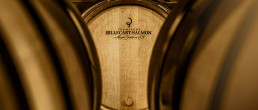
This month’s Wondermaker, Billecart-Salmon is all about Champagne.
“Billecart-Salmon is in the very top echelon of Champagne houses – it is one of only four awarded the 10/10 rating”
Tyson Stelzer, Acclaimed Champagne Specialist
Champagne. How much magic is in this word – the ultimate luxury libation – the supernova of sparkling wines? Not all champagne is created equal – if you get our drift!
Perhaps we too readily acquiesce to having a glass of the mass produced champagnes of the world like the Moëts, the Veuves, the Mumms… STOP! We dare you to be different this holiday season.
For many years now, Dhall & Nash has been incredibly fortunate and honoured to represent the best of the little guy Champagne Houses, the esteemed Billecart-Salmon. They are Prestigious with a capital P!
So, it’s about time we proselytised to the last few unconverted about the hedonistic, artfully executed, stunningly textured Billecart-Salmon range of superb champagnes. Are you ready to take it up a few notches for your summer festivities and beyond?
And if reviews are your thing, go take a look at the effusive praise Billecart-Salmon receives then try to keep your jaw from hitting the ground when you find some flirting with the ever-elusive triple-digit score. Is it expensive? Yes. Is it worth it? Absolutely, positively, 100%.
“The mark of Billecart is made not by the heavy footfall of concentration, power and presence, but rather the fairy touch of delicacy and crystal-clear fidelity.”
Tyson Stelzer, Acclaimed Champagne Specialist
A Champagne House with Finesse
The History of Billecart-Salmon
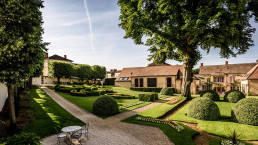
Situated in the Champagne heartland of Mareuil-sur-Aÿ, near Epernay, Billecart-Salmon has been under family ownership and management since its founding in 1818. It is a family-run winery with a majority share owned by the Billecart family and a minority holding is held by the Frey group, itself a family-owned business – they are owners of Château La Lagune in Bordeaux, Paul Jaboulet Ainé in the Rhône, and Château Corton C in Burgundy.
The Billecart family still lives on site and there remains a strong sense of long-visioned family continuity at play. Today there’s the seventh generation Mathieu Roland-Billecart overseeing everyday business as CEO, working closely with Antoine and François.
“If there is a bartender favourite it is perhaps Billecart Salmon – not just because it’s fine fizz but because it’s a medium-sized house still under family control.”
Drinks International
During the 17th century, Pierre Billecart, an esteemed winemaker of the era, and ancestor of Nicolas François Billecart, was summoned by King Louis XIII who authorised him to create his own coat of arms. Thus, when the Champagne House of Billecart-Salmon was born in 1818 from the marriage of Nicolas-François Billecart and Elisabeth Salmon, his descendants proudly reinstated them. Appropriately a royal seal of approval as the foundation for the new champagne House. And remarkably, both sides of each family can trace their roots back to the village of Mareuil-sur-Aÿ as far back as the 16th century.
It was Elizabeth’s brother, Louis Salmon, who took charge of the oenological side of the business, while Nicolas François, a lawyer by training, developed the commercial side.
Billecart-Salmon prospered throughout the 19th century until the intervention of the First World War in 1914. By the end of the war, the 100-year-old house was down to just 75,000 bottles remaining in the cellars. However, the company got through relatively unscathed and Charles Roland-Billecart managed to restore sales to around 217,000 bottles by 1936.
Always conscious of improving the quality of their champagne, in 1958 they developed a winemaking method that was revolutionary for the time (Geek Talk on this later). This new technique meant that over time, the wines conserve their crystalline freshness, and the aromas intensify, allowing Billecart-Salmon champagnes to deliver all they promise.
In 1964, as a tribute to founder Nicolas François, the house launched the first vintage of the eponymous Cuvée Nicolas François. In 1999, the Cuvée Nicolas François Billecart Vintage 1959 was chosen “Champagne of the Millennium” by a committee of experts at a blind tasting session involving 150 vintages from the most illustrious champagne producers, organised in Stockholm by Richard Juhlin, a great champagne specialist. Amazingly, the 1961 vintage of Cuvée Nicolas François, came second. Double Wow!
Even if two centuries have passed since the creation of Billecart-Salmon champagnes, its motto remains unchanged: ‘‘Give priority to quality, strive for excellence”
Billecart-Salmon
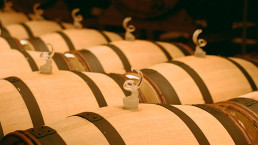
Ever the trend-setters, in 1970, Jean Roland-Billecart, the then company president, decided to develop a rosé Champagne at a time when this type of Champagne was not considered high quality. This move changed the face of champagne forever.
Today, the Billecart-Salmon non-vintage rosé is the gold standard for every champagne house making rosé.
“Billecart [] has a particularly and deservedly high reputation for its Brut Rosé”
Jancis Robinson MW
By the early 1990s, the house repositioned itself as a premium brand, focusing on high end restaurants and exclusive retailers. In keeping with this revitalisation, in 1995, the house decided to isolate one-hectare of its most valued vineyard to be vinified separately. This became the first vintage of Clos St-Hilaire, a 100% Pinot Noir Blanc de Noirs vinified directly on site (very rare in Champagne) and aged in barrels.
Billecart-Salmon’s Le Clos Saint-Hilaire is “the King of Blanc de Noirs, [] a towering masterpiece of profound mineral clarity and unfathomable complexity.”
Tyson Stelzer, Champagne Specialist
Style and Uniqueness
The Continuing Quest for Excellence
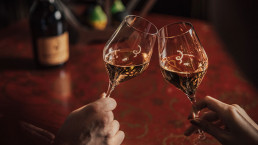
In 1996, François Roland-Billecart decided to re-introduce oak as a major component in the making of their wine. This widened the range of available aromas for blending by the Chief Winemaker. As for all the techniques used by the House, the oak casks, and more recently large oak barrels, have been selected with great care by the Vineyard Master. The vinification in steel tanks combined with that in oak casks enhance the wines of the House. As always, the goal at Billecart, is to encourage subtle refined complexity rather than any overt oak character.
Another unique factor lies at the root of the specific Billecart-Salmon style: time. Unlike the legal minimum required for Champagne wines – 15 months for non-vintage wines and 36 months for vintage wines – Billecart-Salmon bottles are laid down for a minimum of between 3 and 10 years in its chalk cellars before they are judged ready for tasting and release.
Billecart-Salmon is discreetly but significantly continuing to evolve. With the new millennium came the construction of a new cuverie, enabling better control of individual parcels in small temperature controlled tanks. This was followed in 2010 by the addition of a new Chai housing 400 small and two large oak foudres. Since 2018 another cellar is home to oak foudres retaining some 80,000 litres of reserve wine.
Meanwhile, Billecart’s wines are spending longer and longer sur lees, and fruit sourcing is changing—with more grand cru fruit replacing premier cru fruit—while volumes remain the same. Based on the trials underway in their emblematic Clos Saint-Hilaire, the next frontier will be the vineyards.
Billecart-Salmon “…is going from strength to strength.”
William Kelley, Robert Parker’s The Wine Advocate
Billecart-Salmon And Gastronomy: An Alliance of Taste
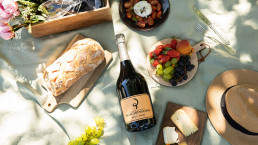
Billecart-Salmon has built its reputation partly through its association with fine dining and haute cuisine. The House owes this to François Roland-Billecart, who, as a watchful observer, understood in the early 1990s, that champagne had ceased to be merely a wine and had become the signature of an image. Thus, the only future imaginable for a small house like Billecart-Salmon was to encompass wine experiences of the highest quality. From that point on, with the help of Alexandre Bader, the current Managing Director, Billecart-Salmon pivoted towards a defining relationship with haute cuisine becoming the champagne served in all 27 Michelin-starred restaurants in France. What a coup!
“It’s easy to work for a company that is searching for quality as the goal across the whole process. The best grapes on the best terroirs are expensive, but this is our priority.”
François Domi, Retired Chef de Cave
Hands-on In the Vineyards
Grapes from the Best Crus in Champagne
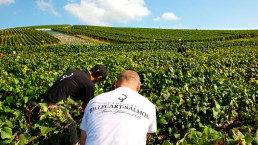
The excellence of Billecart-Salmon champagnes rests, above all, on the knowledge of those who rigorously select grapes from vineyards of more than 300 hectares, of which about 100 hectares belong to the House and its shareholders, divided between 40 different Champagne crus. The House also manages under lease arrangement, 80 hectares of grand cru fruit, taking full control from pruning to harvest. Overall, Billecart-Salmon has 52% Grand Cru fruit, 16% Premier Cru.
Fortunately, most grapes used for winemaking come from a radius of 20km around Epernay, where the great wines of Pinot Noir, Chardonnay and Pinot Meunier from the Montagne de Reims, Côte des Blancs and the Vallée de la Marne are to be found.
Billecart-Salmon is certified « High Environmental Value » and in 2017, was awarded the «Sustainable Viticulture in Champagne» certification for its winemaking
Billecart-Salmon’s trials with biodynamics and permaculture were begun in the Clos St Hilaire plot. CEO Mathieu Roland-Billecart describes the one-hectare parcel as his research and development facility. It is here, in a controlled, manageable environment where the estate seeks not only to better its understanding of soil and climate but also to trial new practices and establish advancements in viticulture. He describes the current viticulture as “organic plus”. There is ploughing by horses, sheep graze the grass, and there are bees. Though a large percentage of the house’s vineyards are farmed organically, the estate is not organic in its entirety.
Mathieu says he sees great hope for permaculture, but a lot depends on the size of the parcel. In Champagne, the average size is 0.13 hectares, so this can be a problem. ‘We don’t believe in the one size fits all approach,’ he says. ‘It is parcel by parcel: some vineyards are more capable of dealing with organics than others.’ They no longer use herbicides, and whether or not they plough depends on the plot.
‘Billecart-Salmon are deeply committed to the preservation of the link between man and nature’
Billecart-Salmon Website
The Billecart-Salmon Philosophy
The House’s philosophy is simple: respect the terroir in order to produce great wines.
Mathieu Roland-Billecart, explains: “Billecart-Salmon experiments all the time, whether it’s in the vineyard or in our vinification process. What that means is that we try new things to further improve the quality wherever we can. The vast amount of these experiments you never see. Because if they are successful, and very often they are, they end up being kept in our reserve wine catalogue, so they help us to further improve the quality of our wines, which in time means that they improve the quality of our non-vintage Champagnes, whether that is Brut Réserve, Brut Sous Bois, Brut Rosé, etc.”
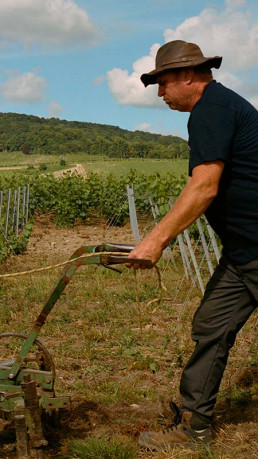
Billecart-Salmon’s Commitment to Sustainable Viticulture
In its constant quest for excellence, Billecart-Salmon favours cultivation methods that aim to protect the environment and promote biodiversity. Committed to preserving the cycle between winemaker and nature, the House has long been convinced that such a course of action is essential in the pursuit of environmental sustainability.
Long before being certified High Environmental Value (HVE) and Sustainable Viticulture in Champagne (VDC) in 2017, Maison Billecart-Salmon was already focused on managing its vineyards with the utmost respect for the environment. Beyond a simple approach, it’s a long-term state of mind that calls for constant self-assessment and continuous progress.
VDC
Sustainable Viticulture in Champagne. A fervent advocate of this ecological approach, Maison Billecart-Salmon is raising awareness among partner winegrowers about the importance of the certification through its certification collective. In 2021, 75% of its supplies are VDC certified.
HVE
This is environmental certification at the highest level with 4 indicators considered: biodiversity, fertilization, phytosanitary protection, and water management.
Vinification – Meticulous Work
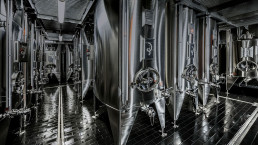
‘When modernity and authenticity unite in the best way’
Billecart-Salmon Website
As part of the ever present quest to maintain the quality of their champagnes, in the fifties, Billecart-Salmon developed the most revolutionary technique of double debourbage.
Essentially, after the standard clarification process to settle out solids, the juice is settled a second time at 4degrees Celsius for a minimum of 48 hours. The house pioneered this system. Inspired by the maternal grandfather’s experience brewing beer no less!
What happens is this – at this temperature, the coarser lees are removed without risk of oxidation, delivering pristine juice perfect for fermentation. The process is expensive and time-consuming. Fellow vignerons thought they were crazy.
The juice is then brought up to just 13 degrees C for the primary fermentation. All 100 tanks are individually temperature controlled. At this temperature, cultured yeasts from the natural yeasts of nearby villages take 3-4 weeks to complete fermentation. Such long cool ferments are crucial for retaining greater freshness and delicacy than a standard champagne ferment of one week at 20°C.
The cuverie (winery building) concentrates primarily on small thermoregulated cuvees (47 hectolitres) which allows the House to observe the traceability of the grape varieties and the individual parcels. This vinification is carried out cru by cru and grape variety by grape variety which permits the conservation of the nuances of expression of the terroir. In vinifying at a low temperature, the fermentation process slows down, encouraging ethereal aromas, which are delicate and allow all the purity of the fruit to be expressed. It is the absolute signature of the Billecart-Salmon style.
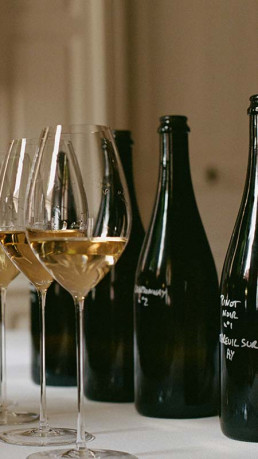
“Overall, they [Billecart-Salmon] are rather subtle and low key. They say that while most other houses aim for: a fizziness quotient of about seven atmospheres, they deliberately aim for six.”
Jancis Robinson, MW
This is also one of the few champagne houses where some of the top wines are still hand-riddled. But, Mathieu Roland-Billecart insists, there are no rules. Neither for cork v crown cap, malo, nor dosage. Decisions are taken on a wine by wine basis. Though they are very keen on the quality of the liqueur d’expedition, added to top up the wine after disgorgement. So, for a final nuance: every cuvee has a different liqueur at Billecart. Chef de Cave, Florent Nye conducts many tastings with different dosages, from wines aged in barrel and those in tank, to determine which best suits each wine. “The wine is in a constant state of evolution” explains Antoine Roland-Billecart.
Low dosage is also a Billecart signature – over the past decade decreasing the dosage has been crucial in allowing the fruit to show its full character. Antoine says, “It’s like make-up, you don’t need it if there is no problem, and you want to show the real character of the wines”.
Billecart-Salmon has chalk cellars dating from the 17th and 19th centuries meandering for kilometres beneath the cuverie standing guard over the House’s precious cargo. Over time, the wines assert themselves and the aromas develop, imprinted with all the finesse, balance and elegance which are characteristic of the personality of the House’s champagnes.
Billecart-Salmon is famously slow to release wines – with over three to four years in cellars the non-vintage champagnes really blossom, staying around twice as long as the fixed regulations of the appellation. The vintage cuvées patiently wait ten years before they begin to reveal their maturity. Allowing time to play its role is behind the grandeur of all Billecart-Salmon champagnes.
An Instinct for Wine

At Billecart-Salmon, instinct alone inspires wine. It is an instinct transmitted from generation to generation that is to be found in abundance in the House tasting committee. Bringing together three generations of the family as well as the head winemakers, the committee comprises: Jean, François, Antoine and Mathieu Roland-Billecart and Florent Nys, Denis Blée and François Domi. Together, they decide on the selection of wines, blends, and dosages to be made. Step by step, the committee tastes, informs and adjusts each wine, satisfied only when they are all in agreement. Whether they are leaders, cellar masters, oenologists, or winemakers, they all share a passion for wine and are careful to preserve the certain style that is Billecart-Salmon. Altogether ensuring the calibre and legacy of this unique Champagne House continues.
The Artful Billecart-Salmon Champagnes
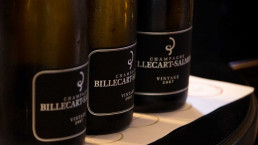
The 200-year old Billecart Salmon Champagne house has never failed to impress wine drinkers and critics – thanks to consistent innovations in winemaking, commitment to quality and the impressive line-up of cuvees!
When wine critic Tyson Stelzer asked Antoine Roland-Billecart how they maintain such transcendental standards in every one of their cuvées, his refreshingly honest reply was: “We are not focused on marketing. Vinification is the key for us, and all the rest is bullshit!” Say no more.
Although the Billecart-Salmon portfolio is vast, they are best known for their prestige founders’ cuvées, Cuvée Nicolas-François, Cuvée Elisabeth Salmon Rosé, and Cuvée Louis Salmon. The ultimate jewel of the estate, however, is the single-vineyard champagne Clos Saint Hilaire: a monstrously powerful Blanc de noir cuvée.
Over the decades, there have been so many glowing reviews with stratospheric scores making them impossible to list here, however, some salient descriptors will give you an inkling of their Best-in-Show status:
“An ethereal champagne”, “richness plus transparency”, “brimming with light”, “very pure, very fresh, very zesty”, “refreshing balance”, “high-toned”, “racy & lively”, “a peacock’s tail finish”, “very confident”, “transparent & delicate”, “very flirtatious”, “polished texture”, “an elixir”, “firm & quite structured”, “elegance & expressive fruit”, “a study in subtlety”, “beautifully chiselled finesse”, “perfect & complex maturity”, “persistent & fascinating effervescence”, “mouth-filling concentration”, “Full-bodied yet agile, “pillowy & layered” and many more.
“I tasted 18 current non-vintage cuvées of the most famous champagne houses last week blind – a rare treat – and Billecart-Salmon Brut Réserve was the most impressive for me.”
Jancis Robinson MW
Which Billecart-Salmon bottles should you not miss out on for Christmas and for 2023?
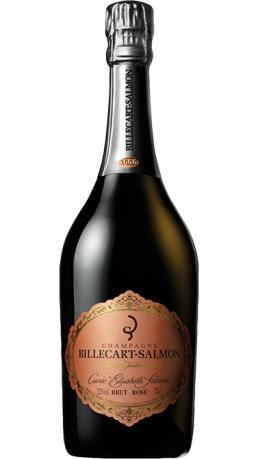
Billecart-Salmon Cuvée Elisabeth Salmon 2009
Depth and Complexity
Copper-orange color with aromas of grapefruit pith, cherry stones, dried roses, white pepper, pastries, walnuts, and oyster shells. Refined and elegant with pretty, dried red and citrus fruit, layered with subtle spice and toast. Fine bubbles. Dry. 55% pinot noir from Mareuil-sur-Ay and Ay, and 45% Grand Cru chardonnay from Cote des Blancs, with 10% of pinot noir red wine. Dosage 7g/L. Disgorged in July 2021. Drink or hold.
96 points – James Suckling
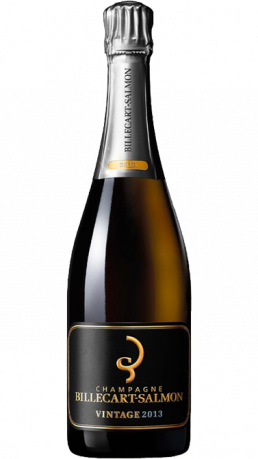
Billecart-Salmon 2013 Vintage
Intense and Seductive
A vibrant Champagne, finely balanced and lacy in texture, serving as an elegant canvas for layered flavours of yellow peach, chopped almond, cherry, toast point and preserved lemon. Minerally smoke, chalk and spice notes play on the finish. Disgorged November 2021. Drink now through 2030.
94 points – Wine Spectator
“This is one of those champagnes that is really joyful, happy, and upbeat, with real vivaciousness yet quite a bit of serious undertow too.”
Jancis Robinson MW on Billecart-Salmon Grand Cru Blanc de Blancs NV
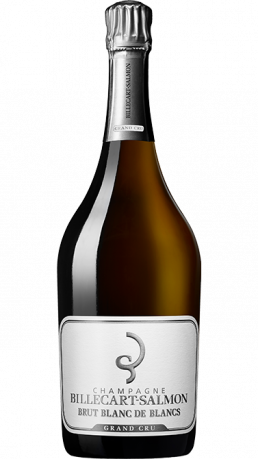
Billecart-Salmon Blanc de Blancs Brut Grand Cru NV
Delicacy & Elegance
Produced from the grapes of five grand cru vineyards of the Côte des Blancs: Avize, Chouilly, Cramant, Mesnil-sur-Oger and Oger, this beautiful Champagne is crisp and mineral, with a great texture and acidity. It has elegance and style as well. It is a finely balanced wine that is ready to drink.
93 points – Wine Enthusiast
Based on the 2015 vintage and dominated this year by Mesnil sur Oger, Billecart’s NV Brut Blanc de Blancs Grand Cru was disgorged in July 2021 with seven grams per liter dosage. Exhibiting aromas of citrus oil, tart stone fruit, freshly baked bread, and white flowers, it’s medium to full-bodied, pillowy, and layered, its sweet core of fruit framed by racy acids and chalky structure.
93 points – Robert Parker’s Wine Advocate
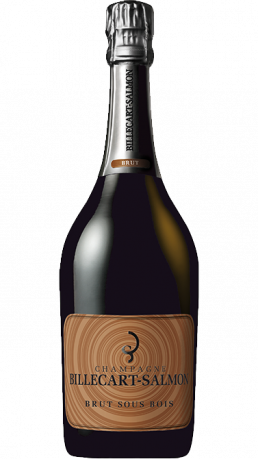
Billecart-Salmon Brut Sous Bois NV
Captivating & Original
This could almost be considered the little brother of the Clos St Hilaire: along with that wine this is 100% barrel-fermented and these are the only ones in the range that are. With one-third each of the three main grape varieties and the malolactic fermentation is blocked, it’s a truly fascinating wine. “It sings with Billecart precision, while basking in the richness of barrel fermentation, silky and alluring, confronting, and commanding, all at once. Don’t serve it too cold and give it lots of air in a large glass” extols champagne specialist Tyson Stelzer.
Taut and vivid with bright cherry fruit, some lively citrus, and a touch of spice. Pristine with lovely intensity and a nice savouriness, finishing bright and complex, with lovely tension on the finish. A gastronomic Champagne.
94 points – Dr Jamie Goode, Wine Anorak
The Billecart-Salmon Sous Bois is one of the best non-vintage Bruts in the marketplace. This Champagne is rich and racy. Its lively aromas and flavors of mineral notes and bright stone fruits should pair superbly with oven-roast chicken over a mix of arugula and kale.
95 points – Wilfred Wong of Wine.com
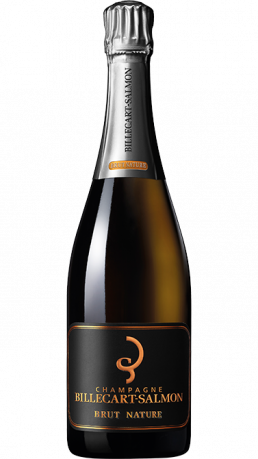
Billecart-Salmon Brut Nature
Pure & Refined
A dense, layered Champagne with a full body and lots of creamy texture. Lovely, cooked apple and pie crust. 40% Pinot Meunier, 30% chardonnay and 30% pinot noir. The base was 2015, but in total it contains 10 harvests. It was bottled at the beginning of 2016 and disgorged in March 2020. Four years on lees. Fantastic release.
94 points – James Suckling
The Billecart-Salmon Brut Nature Champagne is at once rewarding and teeth-biting, as well as delicious and lasting. This wine brings a streak of minerality to the fore with its aromas and flavors. Enjoy its tantalizing stone fruit flavors and generous palate-feel with tuna tartare and a squeeze of Meyer lemon.
93 points – Wilfred Wong of Wine.com
The holiday season will be on us before we know it. With the continued global demand for Champagne, the time to stock up is now. AND – DON’T FORGET – Dhall & Nash has LARGE FORMAT STOCK available!!! Grab these titanic Champagne masterpieces and get ready to captivate a room with each pull of the cork!
Fernando de Castilla: Boutique Sherry
D&N Wondermaker
Bodegas Rey Fernando de Castilla
Boutique Sherry Maker
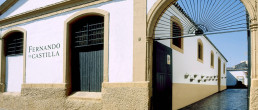
Welcome to the renaissance of Sherry – it’s no longer just for your Nana! Once dismissed as an outdated fortified drink, it’s become a beloved cocktail ingredient for hip mixologists and is rising phoenix-like from its unfortunate association with average aunties and naughty nanas swigging sweet cream sherry on the sly. Fittingly, Dhall & Nash’s exalted Wondermaker this month is boutique sherry house, Bodegas Rey Fernando de Castilla – almost embarrassingly award winning and world renown for their high-end, intricate sherries.
“Sherry is the last of the world’s great wine bargains.”
Bob Campbell, MW
What better reason for us to deep dive into this multi-dimensional, hauntingly complex beverage which can be served as an aperitif, matched to multiple cuisines, suitably paired with elegant degustation menus, mixed in refreshing cocktails, and of course, slurpingly appreciated by every sommelier and wine geek this side of K’Rd. Thankfully the world is slowly waking to the extraordinary potential of sherry as an impeccable fine wine.
We hope you’re Sherry Curious too! Come along as we unfurl the glorious idiosyncrasies of sherry with vinous gems from our D&N Jerez producer, Fernando de Castilla.
“Like Riesling lovers, us sherry lovers are a tribe. We get this. If the rest of you don’t, it’s your loss.”
Tamlyn Currie, Wine Writer for JancisRobinson.com
La Historia
The History
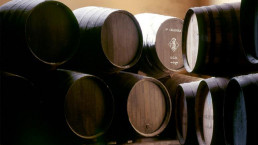
Bodegas Rey Fernando de Castilla’s story began with the aristocratic Andrada-Vanderwilde family, who for two centuries provided grapes and wine for the production of sherry in the classic Sherry producing zone of Jerez de la Frontera.
Shifting with the increased demands of the 70’s and in a strategic move, Fernando Andrada-Vanderwilde in 1972 took over some old cellars from sherry giant Pedro Domecq, as well as brandy soleras from Marqués del Real Tesoro. Andrada-Vanderwilde created the brand “Fernando de Castilla” initially with the aim of producing the most select brandy in Spain. He was honouring the Spanish king Fernando “The Saint” who had conquered large parts of western Andalusia and discovered the exceptional properties of the soil and climate in this region, ideal for viticulture.
The modern incarnation of Bodegas Rey Fernando de Castillo took shape as the brainchild of Norwegian-born Jan Pettersen. With his 15 years’ experience at sherry house Osborne, he saw the potential of the bodega and together with a group of investors, bought Fernando de Castilla in 1999. With his ideas and vision, he enhanced the brand to become one of the most exciting of the Denominación de Origen (DO) Jerez / Xéres region. Over time, it has come to be known for its innovation and consistent quality.
When Jan Pettersen bought the company, he also acquired a neighbouring almacenista (a sherry stockholder who sells wine to shippers), José Bustamente. Further, he formed a partnership with a local grape grower – to ensure consistent supply of high-quality grapes – unusual for the smaller bodegas, who usually have to rely on co-operatives. He decided to focus entirely on high-end, complex sherries – in the process upgrading the bodega to become one of the most highly regarded of the small independent sherry houses in Jerez.
Jan focused entirely on high-end, complex sherries, and usually single-solera. While some of them are old enough to carry a VOS or VORS label, the bodega doesn’t believe in this system. Pettersen feels that it does not accurately reflect what makes sherry so special. To confirm his belief, he once offered for appraisal a 20-year-old sherry to the tasting panel of the Consejo Regulador (all DO sherry rules are defined by this regulatory office). The panel assessed the aromatic characteristics and labelled the wine as VORS (30 years old). Pettersen refused their classification – it confirmed his belief that an exceptional sherry isn’t necessarily always very old, and a label doesn’t tell you the whole story. Bravo!
“Sherry is hot right now among sommeliers, writers, and other opinion peddlers in the wine world.”
Wine Spectator
El Lugar
The Place
Fernando de Castilla is located in the historic centre of Jerez in the old Barrio de Santiago where nowadays more bodegas are appearing again. As is normal in this area, the company does not own vineyards but instead buys sobretabla (wine in the top row of the solera system) wines from partner growers in the pago Añina, with some grapes from the pago El Cuadrado as well. Compared to many others, Fernando de Castilla is a small-scale bodega, most of its wines are only available in yearly volumes of 4000 to 20,000 bottles.
La Filosofía
The Philosophy
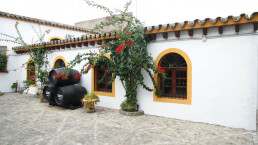
Following Pettersen’s founding philosophy, the bodega specializes in natural, unblended and unfined sherries as supreme examples of the ancient winemaking traditions of the Jerez region. The vineyards they source from are farmed without pesticides or herbicides and all their sherries are estate bottled.
There are two ranges: Classic, and the premium Antique range. The premium Antique range was quite innovative when it was launched, for having clear glass bottles (emphasising the colour and age of the contents) and a 500ml format (highlighting the value). It is the excellence of the award-winning Antique range of intensely pure and complex single solera Sherries that has largely driven Fernando de Castilla’s reputation as masters in the production and ageing of fine Sherries.
Some years after the Antique range, they also launched a successful mid-market Classic range. Again, never compromising on their individuality. Fernando de Castilla have made their name as a bit of a rebel bodega – yet the results speak for their commitment to quality, singularity, and distinctiveness.
“The rolling landscape with its brilliant white soils – this can only be Sherry country.”
Sarah Jane Evans MW, Decanter
Jerez
El viento, el sol y la tierra
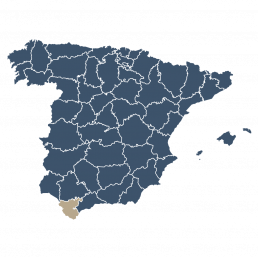
Other countries may have tried to make a fortified wine in the style of Sherry, but none can reproduce the terroir found in this corner of Southwest Spain. This is unique terroir as the locals extol – “El viento, el sol y la tierra” – it’s the wind, the sun, and the soil. It’s the balance between these three elements that makes Sherry so magical.
The vineyard areas of the Sherry Triangle are divided into different zones, known as ‘Pagos’. Some of the better known pagos include Macharnudo, Carrascal, Añina and Balbaina. Each pago has different climate, aspect, geographical and soil characteristics which contribute to the quality and character of the grapes. For instance, there’s an ongoing debate about whether the pagos nearer the sea create saltier grapes and whether this might be responsible for some of Manzanilla’s salty character. Some sherries specify which pagos their grapes originate from on the label.
Fun Sherry Fact – A good sherry harvest needs vigorous vines in their absolute prime. Therefore, unlike most winemaking regions, vineyards in the Sherry Triangle don’t retain old vines. Vines are usually replaced every 30-35 years, on a rotation basis. When old vines are removed, the land is rested for two years before the new vines are planted.
Generally, the Sherry triangle gets almost 300 days of sun each year and around 70 days of rain. During the dry, hot summers, the wind from the ocean brings some moisture to the vineyards, and the clay in the soil keeps the water under the surface. The famous bright white ‘albariza’ soil is a limestone marl which is deep with up to 40% calcium carbonate. This treasured soil has a highly porous structure thanks to the millions of diatomic marine fossils it contains. It soaks rainwater up like a sponge, and then the sun bakes the surface into a hard crust which locks the water inside so it can’t evaporate. Because it’s so crumbly, the roots can penetrate it easily, often travelling for many metres. This means the roots can access precious water during the dry Andalusian growing season.
Since irrigation is forbidden, it’s vital that every drop of rain that falls is captured in the albariza soil. Rain falls in the autumn and winter, often in short but torrential downpours. To catch all the water, the soil between the rows of vines is dug into small square troughs that the water can collect in. This process – known as ‘aserpiado’ – minimises run-off and gives the soil chance to soak up all the rain that falls. At the end of the rainy season, the soil is flattened again.
Another key aspect of the climate is the winds. The Poniente is the humid west wind. The Levante is the south-eastern wind, hot and dry. These two winds blow across the region and give the unique open-air Sherry cellars the right combination of humidity and temperature to gently age the wines in barrel.
The Jerez region is bounded by the Guadalquivir River on one side, and the lesser Guadalete on the other, and to the west, the Atlantic ocean. The town of Sanlúcar, at the mouth of the Guadalquivir, shows the maritime influence most strongly with its pungent but delicate wines (Manzanilla de Sanlucar). Jerez finos are bolder, more structured, reflecting the more intense climate and the distance from the sea. Interestingly, El Puerto lies between the two, geographically and stylistically.
Classification
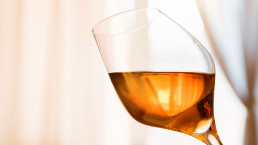
The classification DO Jerez-Xérès-Sherry was founded in 1933, Spain’s first. It is situated in the province of Cadiz. Until recently (2021) for wine to be covered by the D.O., Jerez-Xérès-Sherry had to age within one of the three corners of the so-called triangle of: Jerez, Sanlúcar de Barrameda and El Puerto de Santa María (though the grapes could come from other places within the D.O.). Now under the updated law, the bodegas of Trebujena, Lebrija, Chipiona, Rota, Chiclana and Puerto Real will be able to make and age their wines locally and still label them Jerez-Xérès-Sherry.
For more than a century, there have been three permitted grape varieties for Sherry production—palomino, pedro ximénez and moscatel. But now, seven more are authorized; all have historic ties to the region but were forgotten after phylloxera hit at the end of the 19th century. The newly authorized grapes are beba, cañocazo, mantúo, castellano, mantúo de pilas, perruno and vigiriega.
Further sweeping changes have been approved by the Consejo Regulador de las Denominaciones de Origen “Jerez-Xérès-Sherry.” In this conservative region, these decrees may mark a revolution. No area of Sherry-making has been left untouched, from vineyards to grapes to fortification to aging regulations and labelling. Perhaps the most striking change awaiting final approval, is the option not to fortify the wines. These modifications have been approved by the Consejo Regulador, they must be ratified by the Junta de Andalucía and by the Spanish government before being sent to the European Union for final approval. Watch this space!
“Anyone who has not felt the rock-salt grip of manzanilla, the pressed-white-flowers-into-focaccia of fino, the haunting lost song of palo cortado, the old-photo-albums-nostalgia sweetness of amontillado and the deep-bone biting sepia ache of oloroso has, surely, not lived”
Tamlyn Currie, Wine Writer, Jancis Robinson.com
The Dhall & Nash Selection of Fernando de Castilla Sherries
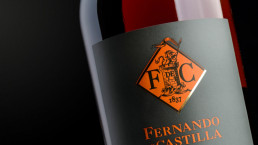
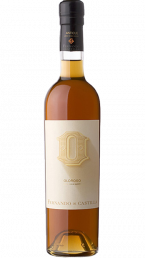
Oloroso Antique Sherry
Fernando de Castilla
Blend: 100% Palomino Fino
Vineyards: Grapes are grown on estate vineyard “Pago Balbaino” on white albariza soils containing 70-80% limestone.
Winemaking: The Antique Oloroso averages over twenty years in age, which qualifies it as a VOS (Vinum Optimum Signatum or Very Old Sherry). Grapes are pressed and fermented in stainless steel and then headlined to 20 degrees and undergoes oxidative aging in the traditional solera and criaderas system.
“The NV Antique Oloroso is open and expressive in the nose, with a predominant note of hazelnuts and varnished wood, a sweet touch of spices, brandy filled chocolates and orange rind. The perfectly balanced palate shows intense, clean, pure flavors and great length. 5,000 bottles produced yearly.”
18/20 – Jancis Robinson MW
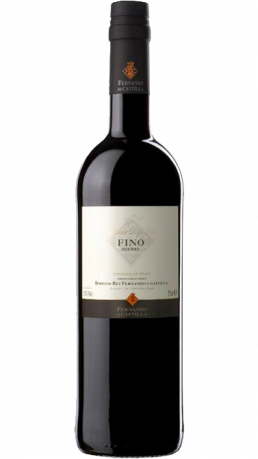
Fino Classic Dry Sherry
Fernando de Castilla
Blend: 100% Palomino Fino
Vineyards: Grapes are grown on estate vineyard “Pago Balbaino” on white albariza soils containing 70-80% limestone.
Winemaking: The grapes are pressed and fermented in stainless steel. Headlined to 15% and subjected to biological aging under flor yeast in oak barrels for the traditional solera and criaderas system. The average age of the wine is 5 years.
“This has enticing range, with hints of nectarine and white peach out front, followed quickly by a saltier profile of chalk, quinine, Brazil nut and citrus oil. The long, vigorous finish has lovely spine, leaving a ‘fleur de sel’ note echoing.”
91 Points – James Molesworth, Wine Spectator
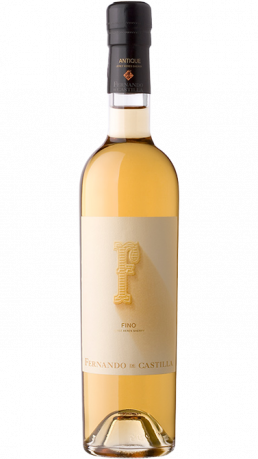
Fino Antique Sherry
Fernando de Castilla
Blend: 100% Palomino Fino
Vineyards: Grapes are grown on estate vineyard “Pago Balbaino” on white albariza soils containing 70-80% limestone.
Winemaking: Antique Fino is a wine of four criaderas that originate from a selection of barrels from the Classic Fino solera that were set aside and left untouched for five years. In contrast to highly filtered, fairly young modern Finos that have been fortified only once, this wine boasts a formidable average of 9 years age at bottling, sees minimal filtration and a second fortification (the old-fashioned way).
“The NV Antique Fino is eight years of average age when bottled; it’s fragrant and perfumed, feminine and subtle, with dry flowers and a rare balance between old and young. The palate shows a much more serious wine, pungent, intense, saline, sharp and at the same time delicate, complex, and long. A most unusual old-style Fino. Bravo!”
17.5/20 – Jancis Robinson
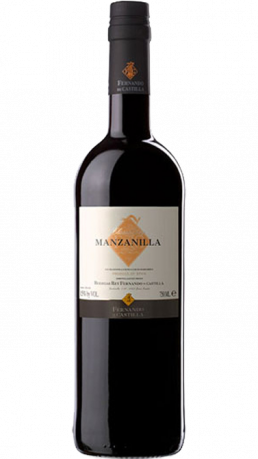
Classic Manzanilla Sherry
Fernando de Castilla
Blend: 100% Palomino Fino
Vineyards: Grapes are grown on estate vineyard “Pago Balbaino” on white albariza soils containing 70-80% limestone and elaborated in Sanlúcar de Barrameda.
Winemaking: The grapes are pressed and fermented in stainless steel. Headlined to 15% and subjected to biological aging under flor yeast in oak barrels for the traditional solera and criaderas system. The average age of the wine is 3 years.
“Shows a lightly honeyed edge, with beeswax and paraffin notes lining the core of lemon curd, white peach, meringue and sunchoke. The long, floral-filled finish is lacy and alluring.”
91 Points – James Molesworth, Wine Spectator
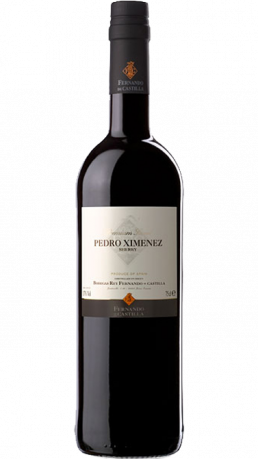
Pedro Ximénez Classic Sherry
Fernando de Castilla
Blend: 100% Pedro Ximénez
Vineyards: Grapes are grown on estate vineyard “Montalbán” on white albariza soils containing 70-80% limestone.
Winemaking: Pedro Ximénez is made by drying the grapes under the hot Spanish sun, concentrating the sweetness. The grapes are then pressed and begin fermentation while fortified to 15%. Because the wine has not completed fermentation, much of the sugars remain where it is aged oxidatively in the traditional solera and criaderas system of oak barrels. The average age of the wine is 8 years.
“PX is so much more than sweet, or old. Fernando de Castilla’s Jan Pettersen doesn’t just want raisins in a glass, he’s looking for dates, figs, leather, and tobacco. Stunning complexity.”
95 points – Decanter
There’s so much to choose from! Sip your way through our Fernando de Castilla selection – will you be seduced by the light and dry Fino, or the oxidative Oloroso, or the sexy syrupy PX. Don’t worry, you don’t have to love them all, but you’d be crazy if you can’t find a favourite. And remember, Sherry is a wine meant to be enjoyed with food – any of these Fernanda de Castilla Sherries will elevate your next gastronomic experience. Have fun & SALUD!
Fun Sherry Fact – Sherry contains antioxidants that help control cholesterol levels. Four of the most commonly produced Sherries, Oloroso, Manzanilla, Fino, and Amontillado, were tested and all four increased the body’s production of ‘good’ cholesterol, which medical experts think helps to carry potentially harmful cholesterol away from the arteries and back to the liver.
A Bit of Ancient History
Sherry is one of the world’s oldest wines, with the earliest reference believed to be from Greek geographer Strabo in the 1st Century BC. He writes that the Phoenicians brought the vines to ‘Xera’, the Jerez region in 1100 BC. The city of Cádiz became a place of trade between the Phoenicians and the Spanish. By the time the Romans conquered the land, viticulture was at the forefront of their empire. Soon, Ceretanum, or “wine from Ceret” was being spread around the Roman empire as an early version of Sherry. Then came five centuries of prohibition under Islamic rule, dating from 711 AD. After which King Alfonso reconquered the city. As it was at the frontier it acquired the name Jerez de la Frontera.
Subsequently the wine trade with England and the Low Countries prospered. In the late 19th century phylloxera interrupted supply. With the replanting, the diverse range of indigenous varieties narrowed to the three that prevail today, mainly Palomino (with some Moscatel and a little Pedro Ximénez, both used for sweet wines).
The next challenge was commercial. Inevitably, it came from the British. They fostered the Empire’s sherry imitations: from Cyprus, South Africa, Australia, and even NZ. It was a number of decades before Sherry was able to defend its right to its own name. Though the region is proud of its heritage, it is also striving to stay relevant to modern consumers.
“It’s a style of drink from another era, when wine was more like booze, and even among the great fortified wines, it’s hard to deny that Sherry sticks out. It doesn’t taste like wine is “supposed” to taste”
Wine Spectator
Geek Out on Sherry
Based on how they are aged – ‘oxidatively’ or ‘biologically’ – there are strictly speaking just 2 basic types of sherry: Fino and Oloroso. Fino being light and very dry or Oloroso being richer and full, but also dry. Sweet Sherries are made by sweetening either type.
Once a year the Palomino grapes are picked and fermented into a fairly flavourless dry white wine of moderate alcohol (11-12.5% vol.). Now it starts to get interesting. At this point, when the wines are put in casks, the special Sherry magic begins. A yeast called flor grows spontaneously on the surface of the wines destined to be finos. The flor eventually covers the whole surface, protecting the wine from oxidation. The flor feeds on oxygen in the air and on alcohol and glycerin in the wine. It changes the wine’s character, contributing a distinct aroma and flavour and rendering the wine finer and more delicate in texture.
Flor doesn’t grow on olorosos-to-be because their higher alcohol content prevents it. Without the protection of the flor (and because the casks are never filled to the brim), these wines are exposed to oxygen as they age – hence the distinctive oxidative characters of these sherries.
The winemaker (the master blender with the Nose!) decides which Sherries will become finos or olorosos by judging the appearance, aroma, and flavour of the young, unfortified wines staying within the House style naturally. If a wine is to be a fino, the winemaker fortifies it lightly (until its alcohol level reaches about 15.5 percent). He strengthens future olorosos to 18 percent alcohol. All Sherry is fortified with a neutral spirit made from the Airén grape grown in the region of La Mancha.
But wait there’s more to geek out on! One of the most defining features of sherry is the traditional method known as the Solera-criaderas system. Also known as fractional blending.
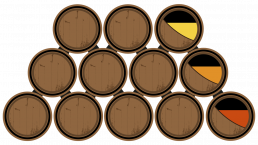
Weirdly, like Champagne and Scotch, Sherry is a blended product. The Solera system creates a wine that is the product of as few as 3 or as many as 100 vintages and is well worth the price.
We’ll try to keep it simple… Think of a pyramid of barrels four rows high, with older wines at the bottom and younger ones at the top. Instead of emptying an entire barrel into bottles, only a portion of an older barrel is emptied, then topped up with wine from a younger barrel one row up. That row of barrels is then topped up with even younger wines, and so on.
For even more geeky detail – The bottom row of the pyramid of barrels, or the solera (from the Spanish word for floor, suelo), contains the oldest wine. The barrels or butts – as they’re called – placed in subsequently higher tiers on top of the solera are called criaderas, meaning “nurseries.” The highest row contains the youngest wine, and the rows are numbered in order of proximity to the bottommost tier: 1st criadera, being the closest, followed by 2nd criadera, etc.
The aging process is as follows: at specific intervals, an amount of wine from the oldest, floor-level cask is removed (in a process called saca) for bottling. This barrel is then topped off with wine from the next tier up, and so on, until reaching the top row. The top-tier of casks then has “base wine” from the añada system (wine from a particular vintage) added to it, although none of the 500-liter casks are filled completely.
This act of topping off the barrels is called the rocío (sprinkling), and the whole saca and rocío process is called correr escalas (running the scales). The wine that is taken out to be bottled is therefore a mixture of all the wines above it – hence its lack of vintage – created in an endless process of mixing and aging that produces some of the world’s most distinctive wines. Not only does this process serve to preserve the characteristics of the wine in the solera, but it also minimizes any variations that might occur from one year to the next.
Although this description explains the basic functioning of the solera-criadera aging system, the product can be affected by other factors. One is the type of wood used for the casks, though American oak is now the most common. Another is the frequency with which the wines are moved through the system – operations called trasiegos – and the quantity and frequency of the sacas depends on the characteristics sought after by the winemaker. Different types of sherry wines are also subject to different treatment.
The premium-ization of Sherry did not begin in earnest until the 2000s, with the adoption of standards for VOS (“Very Old Sherry”—an average of 20 years in the solera) and VORS (“Very Old Rare Sherry”—30 years) and the practice of releasing single-almacenista bottlings from the small producers who would typically sell their wines off to larger houses, to disappear into the big soleras.
Fun Sherry Fact – During the Colonial period Sherry casks were too expensive to ship back from England, so they were used to store whisky. Distillers noticed a great improvement in the flavour after storage and thus, the Sherry cask aged Scotch was born.
Sherry Styles
Fino Sherry
Typically made from Palomino grapes Fino ages with a layer of living yeast, “flor” on top (Biological aging). This special film of yeast forms over the base wines placed in the top group of casks, creating a seal over the wine that prevents it from oxidizing, thereby preserving its brightly straw-coloured hue, among other things. Its alcohol level is 15%. It’s brought up to that level with fortification from a grape spirit, but the added spirit in Fino is minimal. Typically smelling of almonds, yeast, and lemons, it’s bone dry and refreshing. Often used as an aperitif and served with pre-dinner snacks such as olives, jamón, tomatoes and cheese, it’s also good with poultry, seafood, and fried foods. (Fino and fried chicken – oh yeah!)
“Fino represents the fresh-faced, aromatic side of the Sherry family.”
Sarah Jane Evans MW
Manzanilla
Manzanilla is closely related to Fino, produced similarly but in different regions. It is biologically aged in Sanlúcar de Barrameda and has its own DO – “Manzanilla – Sanlúcar de Barrameda”. It has more salinity than Fino, a quality attributed to the salt in the air of the coastal region influencing the flor. Manzanilla is made to marry with any tapas, or oysters, anchovies, raw fish, olives, almonds.
Amontillado
Arguably the best of both worlds, Amontillado starts life as a Fino before undergoing further ageing without its protective blanket of flor. This style of sherry exemplifies how the solera-criadera system can bring together both biological and oxidative aging processes. The wine is initially aged under flor for a period of around three to eight years. Typically, the winemaker/blender chooses when to end this biological aging process by fortifying the wine, bringing the alcohol level to around 17% and thereby killing off the yeast. The wine continues to age in the blocks of casks, but this time through oxidation, which allows it to develop warm amber tones and spiced, nutty notes. Often creamy, and textured, with dried fruit and citrus peel characters. Perfect to pair with roast pork, hard cheeses, meatballs or even a steak sandwich.
Oloroso
In the case of these mahogany-hued, wonderfully nutty, and complex sherries, the solera-criadera system is used entirely for oxidative aging. The base wine is fortified to 17% in order to prevent the flor from forming, and the wine’s oxidation is aided by moving the wines from one cask to the next. Long periods of aging can also result in the evaporation of some of the wine’s water content through the porous wood casks, leading to more intense flavours and aromas that can range from deeply toasted, to spiced and/or balsamic.
Palo Cortado
Palo Cortado is a dark reddish Sherry style with about 22% ABV. It is an oxidatively aged Sherry made with younger wine. This Sherry undergoes two fortification stages and is similar to a lighter-bodied Oloroso. Divine with cured meats, Manchego cheese, smoky almonds, and tapas.
“Drinking Sherry is not a fad. It’s pushing us forward on trying to rethink what wine can be.”
Paul Grieco, Legendary Sommelier/Owner Terroir Wine Bars NYC
Sweet Sherry Styles
Naturally sweet sherry is produced by stopping the fermentation mid-way. This prevents the conversion of all the residual sugar into alcohol. Depending on the grape variety, there are two types of naturally sweet sherries:
Pedro Ximenes
The PX grapes are picked and allowed to dry on straw mats in the sun until they begin to shrivel. The intense and very sweet grape juice that results is then fermented but the fermentation is stopped by adding alcohol (which kills the yeast cells) while the wine is still very sweet. Match with dark chocolate cake, figs in honey, date pudding, drizzled over ice cream. Boom!
Moscatel
This Sherry is produced with fully or partially sun-dried Moscatel grapes. It has an intense floral nose, medium acidity, and a sweet unctuous palate.
Fun Sherry Fact – It’s low on calories. – Enjoy Sherry with tapas guilt-free! Dry Sherries are low in calories –A glass of Fino or Manzanilla contains approx. 45 calories. A typical red wine can contain anything between 100 and 150 calories and a typical white can be more. So, if you want to cut those calories you know what to do. Just avoid the sweet wines… Also, Finos and Manzanillas have very low histamine content. Everyone blames sulphur, but it’s usually histamine which causes hangover headaches.
The following sweet sherries are made by blending two or more fully aged Sherry wines in the bodegas. They are classified as:
Pale Cream Sherry
The Pale Cream Sherry style is a biologically aged Fino Sherry or Manzanilla wine with 45-115 grams of sugar per litre.
Cream Sherry
It is a sweeter Sherry wine (115 -140 grams of sugar per litre) made by blending Amontillado or Oloroso with Pedro Ximenez.
Medium Sherry
Medium Sherry is made from Amontillado and has about 5-115 grams of sugar per litre.
Cool Sherry Cocktails
There’s a sherry for all seasons and for all occasions. We’ve had Jack, our D&N spirits Ambassador, playing with some very groovy sherry cocktail ideas. Because it’s so multi layered and refreshing, it can be added to create twists on some classic cocktails, particularly those with gin, substituting some of the gin for Fino for example. Have fun experimenting too!
- Stranger & Sons Gin
- Fernando De Castilla Fino or Manzanilla
- Lemon
- Orange Bitters
This is a modern day classic normally made with Fino. Swapping out the Fino for Manzanilla adds extra depth with the slight addition of salty sea spray.
- Fernando De Castilla PX
- Bourbon/ Rye Whiskey
- Dry Vermouth
- Candied fig & Orange twist garnish
This is twist on a manhattan, using the PX like a sweet vermouth adds a more fruit forward and approachable style of a Manhattan.
The Wine of Kings and the Tale of the Gnomes
D&N Wondermaker
Josetta Saffirio
The Wine of Kings (and the Tale of the Gnomes)
All great wines have a great story. And just occasionally they also have a great label. Quaint water-coloured gnomes in pointy red hats would certainly be distinct and eye catching. Gnomes, really? If at first you think it’s all a bit bonkers, actually, its not. These romantic creatures in Piemonte Italy are in no way related to their more kitsch cousins found around the garden ponds of England.
And this wild idea was not some 21st century marketing campaign brainstormed in chic admen offices but rather the endearing tale passed on through generations of a passionately quirky Italian winemaking family. These immediately recognisable gnomes grace the wine labels of today’s legendary Dhall & Nash Wondermaker Josetta Saffirio. We are most fortunate to have a Barolo producer that defies all the usual cliches.
“The gnomes represent the conscience of good men”
– JS website
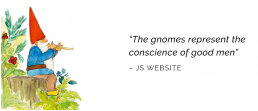
It is said that many great wines are made simply, and at Josetta Saffirio we have a producer with the nerve, intuition, and individuality to push for more simplicity, elegance, clarity, and still imbue depth of character. Fifth generation winemaker, Sara Vezza is crafting fine Barolo, Nebbiolo and Barbera with complete dedication to her craft and also pieno d’ amore for the family land.
Fun Fact: Barolo is known as The King of Wines and The Wine of Kings
Barolo still stands as one of the greatest Italian red wines to ever be produced. But perhaps the most impressive distinction that Barolo holds over most other Italian red wines is how it has impressed royalty over the years. Barolo was an enormous favourite of King Albert of Savoy, who is reputed to have purchased the Verduno Castle solely because it housed General Staglieno, who had a reputation for creating some of the best Barolos of the era. It takes a special kind of wine to be so good that it influences the decisions of royalty, and this interest in Barolo as the wine of kings extended into the 1800s when King Vittorio Emanuele II also took interest in the wine through the purchase of the legendary Fontanafredda estate. Befittingly Barolo has practically carried a royal seal of approval over many centuries.
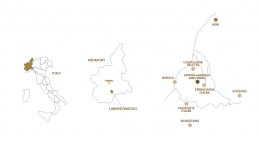
Casa Dolce Casa – Piemonte
Let’s explore the home of Josetta Saffirio wines
In the North-western region of Italy, bordering France and Switzerland, just west of Milan and south of Turin, sits Piemonte. It is well known for the high quality of its wines producing more DOCG designated wine (Italy’s top wine classification) than any other region in the country. The most famous wine producing areas are in the southern portion of the region in the hills known as the “Langhe”. This is the Nebbiolo grape growing heartland around a cluster of fog-prone hills close to the village of Barolo. Nebbiolo is the King grape here producing world famous Barolo and Barbaresco.
“Nebbiolo is the Italian grape that really sets wine lovers’ hearts racing.”
Jancis Robinson MW
Fun Fact: Nebbiolo is popularly thought to take its name from nebbia, Italian for fog that characteristically drapes the region’s hills in autumn.
The Barolo DOCG encompasses 11 different communes and more than 1200 growers in the region. The “Big Five” — Monforte d’Alba (Josetta Saffirio’s commune), La Morra, Castiglione Faletto, Serralunga d’Alba, and of course, Barolo — have the advantage of altitude and soil, producing nearly 90 percent of all Barolo, while the remaining six — Diano d’Alba, Grinzane Cavour, Novello, Cherasco, Roddi, and Verduno — round out the rest.
Barolo is an accurate expression of terroir – it is a powerhouse, tannic wine in some communes, Serralunga, Monforte and Castiglione for example, but also more perfumed and delicate in others like La Morra. The Central Valley Barolos are known for softer, fruitier expressions of the region. Recent technological and viticultural advances are remaking Barolo into a wine that is more consistently balanced and approachable. Producers are careful not to change the flavour or feel of their wines, only to improve, and eliminate poor winemaking methods.
Interestingly, Pinot Noir and Nebbiolo could be brothers from another mother. Both are globally revered and sought after for their elegance, intensity, and age worthiness. And just as Pinot Noir is notoriously unstable genetically, available in many different shades, subvarieties, and clones, so is Nebbiolo. Both are thin skinned, high in acid and tannins. Both are exceptionally finicky about where they will happily grow and ripen. However, Nebbiolo has not travelled well as far as finding terroir to call home as opposed to Pinot’s internationally successful plantings.
Fun Fact: Top-quality Barolo made in the most traditional way is one of the slowest-maturing wines in the world, easily withstanding four decades in bottle.
Barolo is an enigma. Liked by many, unlike any other and understood by few. Traditional Barolo is austere, we could say it is very “introverted”. Although often deep and impenetrable it is worth the patience of cellaring. Like any star, Barolo does know how to tease a crowd. However, there are some reviewers that have become enamoured with Barolo who are puzzled when they taste a traditional Barolo, perhaps because they are looking for a wine with more flash and sizzle, something that was not a style favoured by the original* Barolo winemakers. (*see Barolo Wars Geek Talk further on).
Judiciously, Josetta Saffirio wines tread the wire between traditional and modern, they seem to be infused rather than extracted. Winemaker Sara Vezza Saffirio manages to draw out the power as well as the delicate perfumed nature of Nebbiolo with great assurance and finesse. Throw in the cute gnomes on the label painted by Sara’s mother Josetta, and you know you’ve hit some serious buried treasure!
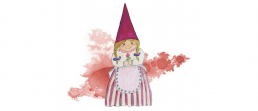
L’avventura Comincia – the Adventure Begins
As an old Italian proverb says, “la fortuna aiuta gli audaci”, yes, fortune favours the brave which is exactly how the Saffirio family has shown through the generations in their love of the land and desire to create extraordinary wines. Although they have farmed here since 1890, perhaps it’s the most recent 3 generations who have demonstrated unwavering courage to do things quite a bit differently. Starting with Ernesto…
L’eroe – the Hero – In 1910 Ernesto Saffirio was born in the village of Castelletto, in the commune of Monforte D’Alba in Piemonte, Italy. As the eldest child, he worked hard to support his family, as his father was away fighting in the First World War. Ernesto was in turn called up during the Second World War. Despite the enormous difficulties that life dished out to Ernesto, he was a strong and determined man who studied diligently and was rewarded with the top job of the Social Security Institute in Cuneo, where he lived after the war. However, his heart remained deeply attached to Castelletto, to the point of acquiring from his brothers’ their plots of inherited land to unite the family property as a whole to resuscitate life into his dearly loved old vineyards.
Una Curiosita’ – the curiously unique label – Despite his hard life, Ernesto Saffirio maintained a childlike soul – every night he recounted to his young daughter Josetta that when he was small, he saw a gnome enter the courtyard of their house in a cart drawn by mice. The fable surrounding these curious creatures was that they helped the farmers in the fields, looked after the animals and the cellar in exchange for a little wine. Young Josetta was captivated. As she went on to have her own children, Josetta recreated the fable on the wine labels to keep these stories alive for her children, Sara and Alessio. Eventually the beauty, symbolism, and originality of these drawings have made Josetta Saffirio’s illustrations famous throughout the world.
“The gnome designs now embody the social responsibility and sustainability at the heart of their business in the 21st century.”
– JS website
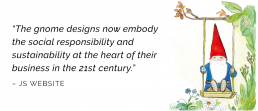
La Leggenda – the Legend – Ernesto’s daughter Josetta was born in 1952 and at only 23 (in 1975) she decided to work in her father’s vineyards. With a degree in agriculture and the help of her oenologist husband Roberto Vezza, she began to cultivate and reinvigorate the vines planted by her grandparents at the end of WWII. Her vision was to transform the family business from merely grape growers into a proud Barolo winery.
She started making wine under her own name, Josetta Saffirio, and describing it with the poetry and her naïve drawings of the colourful gnomes as Ernesto had recounted to her as a child. Several years later, Josetta and Roberto finally reaped the fruit of their labour, producing a Nebbiolo of excellent quality and to wide acclaim. In 1985, they presented their first Barolo with the current gnome label. Finally, Josetta’s extraordinary ‘vin de garage’ Barolo amazes the Italian wine scene achieving the acclaimed Tre Bicchieri in Italy’s prestigious wine guide Gambero Rosso in consecutive years – 1988 and 1989. Josetta Saffirio Barolo had arrived! By her strength and spirit, Josetta had rekindled the previous generations’ love of the land and vinous dreams. So, onto the next generation to continue the “craft-womanship” and dedication.
Even after Josetta’s initial success, by the mid 90’s it had become too much for her and Roberto to manage the vineyards and winery in addition to their other responsibilities. Sadly, for a short time, the winery was closed, and the vineyards were rented.
“We are pieces of a mosaic. We are wine writers, actors of nature, we help plants to grow, as children and we are in contact with the vitality of the earth. The soil, the vine and everything that surrounds us. Wine is a life force, rich in micro-organisms that allow it to evolve. For this reason, it is necessary to work the land with great responsibility towards future generations.”
– JS website
‘La Brava’ – a woman in a man’s world – Enter Sara, Josetta’s daughter, who represents the fifth generation of Saffirio farmers in Monforte d’Alba. An important heritage in terms of responsibility towards past and also to future generations. Sara always loved the vineyards and working with nature. In 1999, at age 19, she started helping her father to make wine, and when she completed her university studies, returned to the family estate full-time. She has devoted herself to using sustainable methods and organics in the vineyards. Thanks to Sara’s uncompromising philosophy and her quality wines, she has forged a respected space within the conservative and very masculine world of winemaking in Italy.
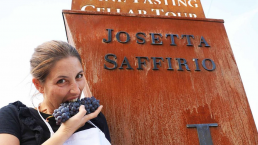
La Filosofia – The Josetta Saffirio Philosophy
The Saffirios seem to be one of the most committed and connected families to the land in the UNESCO World Heritage Barolo area. Their current reputation for terroir-expressive wines, social responsibility and future vision is backed by a familial history of over two centuries within the same commune in Monforte d’Alba.
Despite their rich history, the family also looks to future generations as well. The vineyards are all certified organic (as of 2017), planted ‘giropoggio’ fashion, with rows following the natural contours of the land. Only light machinery is used to avoid soil compaction, and extensive flora between rows also reduces erosion. The farm is part of the consortium ‘Cascina Pulita’, which manages farm waste as sustainably as possible. Not only is the winery 100% carbon neutral, their photovoltaic system produces twice the energy they need. Efforts to reduce their carbon footprint have also involved the use of packaging reduction (lighter glass, shorter corks, and smaller cartons), and the creation of an eco-park with native flora and fauna.
In 2006, the family built an impressive sustainable cellar, integrated with the surroundings, and insulated with natural cork; Sara now uses the facility for vinifying all Josetta Saffirio wines. Her focus on sustainable solutions and technologies resulted in the winery’s receiving a Sustainable Certification in 2015. She, her father, and four employees manage the several colonies of bees kept on the property as well.
From vineyard to bottle, the Saffirio team is fastidious in approach and dedicated to transferring the character of the terroir into exceptional, personality-driven wines. This brings us environmentally harmonious Barolo, Langhe Nebbiolo and Barbera, and with each vintage they share a story of the land, its people, their trials, and successes.
The joy of “terroir” is knowing that when you open a bottle, there is a “story” inside, a story of place and people. Indeed, the wines of Josetta Saffirio all have an immense story and big personalities. We cannot fully explain exactly how the natural aspects of terroir and the choices the vignaiolo (winemaker) made create the multitude of aromas and nuanced tastes in the wines… but they do, and we keep exploring, tasting, enjoying, and learning to understand the Josetta Saffirio terroir through their wines.
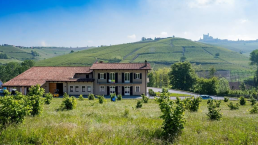
Il Terroir, I Vigneti e La Cantina - The Land, The Vineyards, and The Winery
Only ten minutes away from the village of Barolo, on the top of a hill sits Saffirio’s five hectares of vineyards facing southeast, which are all within the Castelletto subzone of Monforte D’Alba. The looming hill of Castelletto ensures a cooler micro-climate and the wines have a reputation for elegance. At the heart of the vineyard is the Nebbiolo planted by Sara’s grandfather in 1948, the Michet clone has perfectly adapted to the terroir, and it is the stock that has parented subsequent plantings. (Michet is highly valued for the quality and concentration of the wine produced).
The oldest vineyard was planted by Ernesto on Rupestris rootstock which is highly resistant to downy mildew. Many of their new plantings also utilise clones from this vineyard to continue the storyline of the past through their DNA. Their vineyards are polyclonal, thanks to plants selected from thirty years of university research and massal selection – the practice of replanting their new vineyards with cuttings from exceptional old vines from the same property.
The Saffirio soil type is Helvetian-stage, which is exposed seabed formed during the late Miocene, about 10-12 million years ago. It is medium-textured (silt, clay, and sand in equal parts), rich in mineral salts and active lime on a very steep slope (40-50%).
By law, the Barolo DOCG denotes specific production methods and a quality guarantee – they must be 100% Nebbiolo and aged at least 38 months, 18 of those in wood barrels. The term “Riserva” can be used on the label when the wine has been cellared for at least five years. Both with a minimum 13 percent alcohol content.
Vinificazione per il Barolo DOCG: Soft pressing of handpicked grapes followed by destemming. Fermentation in thermostatic tanks at controlled temperature (30-32°C). Maceration lasts 7-9 days followed by racking when fermentation is complete. Immediately following malolactic fermentation, the wine is transferred into barrels, some of them new and some used previously. The wine, decanted each year, is assembled after 24 months in cement vats where it stabilises naturally for another six. Bottling follows in the summer. The wine is bottle-aged for another six months prior to release.
Vinificazione per il Nebbiolo Langhe DOC – 100% Nebbiolo from Monforte d’Alba – Castelletto subzone. Mixed soils composed of silt, clay, and sand, rich in mineral salts and active lime. Langhe Nebbiolos are generally made from declassified fruit from the regions of Barolo, Barbaresco and Nebbiolo d’Alba. At Josetta Saffirio the grapes are handpicked, pressed, and then destemmed; the must is then cold-macerated for about 24 hours. Temperature-controlled fermentation follows in thermostatic vats. After 8-10 days of maceration the wine is racked when fermentation is complete. Following malolactic fermentation in December, Langhe DOC Nebbiolo ages in 30 hl oak barrels for about 12 months. Bottling takes place in the second winter after the harvest.
“For two centuries we grow the vines and tell the area through our wines. Harvest after harvest, we are rooted in the great land of the Langhe.”
– JS website
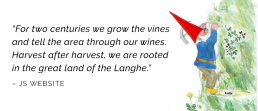
Geek Talk - The Barolo Wars
We all know, Italians are very passionate people. And Italian wine folks are extremely passionate about all things vinous – in this case, barrels! The controversy over the use of French oak barriques versus traditional botti* began in the mid-1980s and took on the dimensions of a holy war – defiantly named the Barolo Wars. The new approach was being promoted by a group of avid winemakers who came to be known as the Barolo Boys, something of a misnomer because winemaker Chiara Boschis is one of the five members of the group.
Anyway, Barolo vintners who are traditionalists use the huge (1,000 – 10,0000 litres) Slavonian oak botti* that may be used over and over for decades. The botti (plural) are used as inert containers; they allow the wine to mature as the pores in the staves are slightly air-permeable, but they don’t impart any oak flavour or aroma into the wine.
Barolo modernists, on the other hand, inspired by the practices of Burgundian winemakers, forego the botti in favour of the much smaller French oak barriques (225litres). By using the barriques, the resulting wines were smoother and way faster-maturing, but the traditionalists believe they become ‘less distinctive’ – less a reflection of true Barolo terroir.
In any case, using barriques was considered revolutionary at the time. Whether the traditionalist or modernist approach results in better wines remains a subject of disagreement among Piemonte’s winemakers even today. Yet many producers nowadays will use a mixture of these two sorts of containers for ageing, depending on the particular vintage and individual vineyard sites.
“I would like to describe to you the feeling I have in April watching the new sprouts, and everything coming back to life after winter. I would like to tell you about the intense and delicate bouquet of Nebbiolo flowers in May. I would like to be able to express the joy in bringing the grapes in the cellar during the harvest in September—the work of a whole year. But it is impossible to do it with words. I hope to tell you about it through my wine.”
– Sara Vezza Saffirio
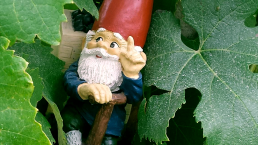
I Vini – The Wines of Josetta Saffirio
It takes great skill to tame the notoriously temperamental Nebbiolo grape. In Sara’s wines you sense the passion and an individuality that are not trapped by someone else’s idea of what Nebbiolo should taste like. And where ‘modern’ wine making has attempted to embellish, stylise, and slather on flavour, Sara is subtly enhancing our taste perceptions. Her goal is to rid the wine of illusions and still taste all the vividness of fruit, liberated from conformity, fashion and worst of all, flavour for flavours sake.
With Barolo fast becoming an expensive collectors’ wine, particularly in highly touted vintages, you’d think that there’s no longer high value treasures to be found. Which is why Josetta Saffirio’s entry level Barolo demands your attention. Energetic and expressive, winemaker Sara Vezza has captured this vintage beautifully. This wine is spot-on in every way and will linger in your palate memory indefinitely. Pounce now!
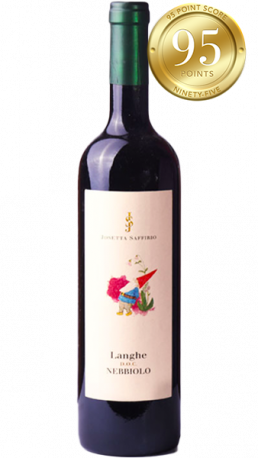
2019 Josetta Saffirio Langhe Nebbiolo
“Bright, ruby-red with a garnet hue, lighter on the rim. The nose is soft and vibrant, sweet fruit of strawberries, cherries aromas interweave floral, spice and subtle note of earth. Full-bodied, aromas of strawberries and cherries accompanied by savoury mealy nuance, unfolding floral and spice details. The palate is salivating, brilliant acidity balanced by the ripeness of fruit and a fine, silky tannin grip; earthy and savoury notes linger to a lasting finish with a hint of spice and floral lifting. This is an approachable Nebbiolo with attractive ripe fruit, acid balance and a silky, smooth tannin grip. Match with truffle shaved pasta pork stew over the next 5+ years. Handpicked, destemmed, pressed to ferment in stainless steel tanks, 10 days post-ferment maceration, after MLF, aged in oak barrels for about 12 months.” 95/100 pts 18.5/20 pts
Candice Chow, Raymond Chan Wine Reviews
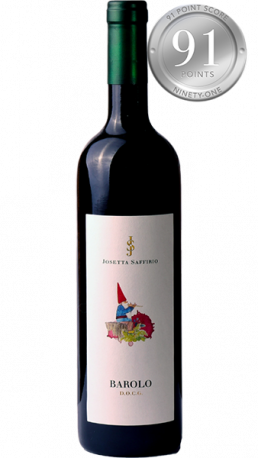
2017 Josetta Saffirio, Barolo
“Rose petals, cherry blossom, and then a flood of intensely sweet, intensely pure cherry fruit. The palate is even more perfumed than the nose, soaring ethereal beauty and intrinsically get earth-connected. If ever a wine reminded me of a giant old tree, its roots deep and wide into the earth, its branches etching the sky, it is this one. I can almost taste (and feel) earth-clad roots, cold wind, rough bark, the vibration of bird wings, sunshine on leaves, the thrum of insects. The fruit has the purity, lift, song, alto timbre of a cello. The finish is poised, purposed, persistent, wrapped in goassamer.” 17.5/20 pts – Jancis Robinson.com
“This opens with alluring aromas of black-skinned berry, cedar, and spice. The polished palate offers ripe black cherry, liquorice, and clove alongside firm tannins.” 91/100pts – Wine Enthusiast Kerin O’Keefe
